|
Last weekend we had the first figure wargame within the framework of our Shenandoah Valley campaign. It took place at Franklin in West Virginia, between Shields’ Federal division of Banks’ army and Johnson’s Army of the Northwest, reinforced by Jackson and a brigade of his foot cavalry. Shields had been sent in an outflanking manoeuvre by Banks, played by Spencer. The mechanics of the game: playing with a split personality I played the game using Sam Mustafa’s Longstreet rules and my 12mm Kallistra figures. The 72 x 48 BW map came from a Google satellite map of Franklin WV. I drew on the historical orders of battle for the troops present. Matt, who is Jackson, was present and so gave me his instructions for the battle direct. As Banks/Spencer was not present on the field in person, I recruited Dan to provide orders for the Federal force. Each had a scenario briefing as if for a face to face game. Matt supplied general instructions for the Confederate side while Dan really went to town, with full instructions and four maps showing his intended dispositions and movements. Between them, the instructions from the players supplied all I needed to play the game in accordance with their wishes. The use of an action deck in Longstreet adds a random quality to solo play. I decided that the federals would hoard/play cards favouring attack and the rebels would use those with a more defensive benefit, - although I made sure to keep Rebel Yell cards for counterattacks. At the start of each turn, I checked what interrupt cards were in the passive player’s hand and rolled a die to see if they would be played this turn. This worked very well, - almost spookily in the case of the so-called “couldn’t hit an elephant” card which represents the enemy general being hit. The union side played this card at a key moment with devastating results, which was a parallel with the wounding of general Johnson at the battle of McDowell in the historical campaign. A brief account of the battle The rebels deployed along the south bank of Friends Run, which flows from west to east above the town of Franklin. Two batteries were entrenched on high ground to the left and certain infantry units were also behind light earthworks along the run. Johnson’s brigades were in the left and centre while Fulkerson was in reserve on the right. Most of Johnson’s Command were recruits while Fulkerson commanded two regiments of veterans. The Federals deployed their artillery on a ridge at the right of their position. Next to them was 2 brigade, in depth to the west of Petersburg Pike. Then came 1 brigade to the east of the pike, with cavalry at the far left, by the south branch of the Potomac. Each federal brigade was much bigger than a rebel equivalent and overall the Federals had significant numerical superiority, although they had no veteran units. The federal attack consisted of an advance in the centre by a line intended to engage the rebels with fire but not to assault. Meanwhile two assaults were made against the rebel wings, each containing two regiments, one behind another. Their cavalry was to try and get around behind the rebel right if the chance arose. In the event it failed in the face of cavalry on the rebel right. Overall, the rebel right and centre held and even counterattacked successfully against the left hand federal assault. On the rebel left however, the union assault rolled right over the front line, helped by the supporting fire from their artillery, which both reduced the Confederate infantry and made some successful counter battery fire. Just at the point when the rebel second line were poised to counter attack, general Johnson was severely wounded. (If you don’t know these rules, the ‘elephant’ card involves removing action cards from the victim’s hand. On this occasion the rebels lost 5 cards out of their hand of 6, which seriously restricted their options at this crucial juncture). This allowed the Federals to press their advantage and push their whole right wing over Friends Run while the rebels were off balance. The rebels could not restore their line and soon found their position unhinged by a federal force deep behind their left and in a position to roll up their position. One of Matt’s instructions was to preserve his troops as a force in being and as the federal position was now so favourable, I decided the rebels should withdraw now or face major losses. Fulkerson was still in good shape, so his brigade formed a screen behind which Johnson’s brigades retreated. The Federals tried to catch as many rebel units as possible and nearly cut off their retreat along the Pike but the rebels left the field in reasonable order. So the first battle has gone the Federals’ way. The players have received their status reports and I am waiting for their orders for the next turn. Dan has won his place as go-to surrogate for future games in the campaign. For my part, I spent two very happy days in the shed, remembering just how much I love these rules. I also realised you can never have too much split rail fencing, so have started work on some new lengths in preparation for the next round in the campaign.
0 Comments
The other evening Dan and Spencer played their first game of Lasalle, leading a Liberation era force of Prussians and Russians in an attack on my French defenders. Little did we know that this is likely to be our last face to face game for some time. Spencer’s Russians consisted of solid infantry and a position battery, while Dan had a mix of good Prussian regulars and unpredictable Landwehr, a foot battery and some Landwehr cavalry. My infantry was half Marine Infantry (Experienced/reliable) and half conscripts (the army list suggests they be Amateur/reliable but I’d made them Amateur/shaky by mistake. That’ll teach me not to check the lists!). I also had a foot and a horse battery and two regiments of mediocre Württemberg chevauxlegers. My position consisted of a central hill with a two-base town to its left. My centre and right were covered by a stream, over which a road ran from the Allied position. Fans of the Battle of Leipzig may notice the broad similarity of troops and terrain with the combat at Mockern on 16 October 1813. I plan to run a multi-player LaSalle refight of Mockern later in the summer and would like the players to be familiar with the rules. I deployed first, putting conscripts in the two town bases with a battalion behind; a battalion of Marines to their right; the two batteries and two more Marine battalions on the hill; and the cavalry on the right covering the bridge. Dan placed his battery on his base line, his regulars and cavalry on his extreme right and his Landwehr on his left. Spencer formed a compact block in march column, above the bridge. I thought from their opening turns that the Allied plan was to mask my centre and assault the town on one flank and the bridge on the other. To stop me from leaving the hill, the two Landwehr battalions were sent to threaten it. Both Dan and Spencer advanced in march column, bringing several battalions within range of my artillery, which received double dice against such juicy targets. The Russians had the benefit of a stone wall to their front which negated this advantage, but the Prussian Landwehr advancing in the centre were seriously disrupted. Meanwhile Dan bombarded my conscripts in the town as his right wing came down the flank to assault them. Spencer crossed the bridge and formed line on my side of the stream with his lead battalion. But he also started siphoning his rear battalions off towards the centre, which now looked like a serious advance on the hill. I’m not sure if this had always been the plan or it was a decision on the hoof. It certainly glued my central battalions to their position. After a couple of checks, the Prussian assault on the town made good progress, taking full possession by the end of the game. Dan’s Landwehr cavalry snuck in past a battalion square and charged my foot battery in front. The guns’ point blank canister emptied too few saddles and in the ensuing combat, the cavalry wiped them out. On the right, we had an interesting test of Russian nerve that paid off handsomely. I declared a cavalry charge against the battalion in line and Spencer elected to give fire as a reaction rather than form square. He inflicted 2 disruptions by fire and then in the ensuing combat, I only achieved an inconclusive victory despite my advantage in dice, which required me to fall back. A bit miffed, I charged with the other cavalry regiment and Spencer again stayed in line. This time the cavalry wiped him out. That’ll teach him! Or will it? He promptly marched another battalion forward to fill the gap. I declared another cavalry charge and, you guessed it, they met me in line. You also guessed it again: I lost the combat and my cavalry broke. It was getting late by this stage and the loss of the cavalry took me to my break point. Although under the rules this does not automatically end a game, we agreed to stop there. The game flowed very well considering two players were new to the rules. It would have gone even faster had we not digressed at various points to discuss everything from NapoleonTotal War to Zulu, my favourite film of all time. But what would be the fun in that? A wargame is at heart a social occasion and Spencer is irrepressible!
As for the game narrative, we agreed that mostly, the rules produced plausible outcomes and we did not feel they imposed unreasonable constraints. The successful Russian decision to receive cavalry in line did make me wonder if the rules are too favourable to this gambit succeeding. The issue hasn’t arisen before: in my previous games of Lasalle, players have tried to form square because they knew that this is what the infantry would have done. But Spencer has long experience of assessing rules and is willing to test their limits. He looked at the odds and decided he liked his chances of shooting my cavalry away without forming square.. This worked for him two times out of three. Now, the recorded cases when unsupported Napoleonic infantry in line successfully repelled cavalry are very few. A battalion commander threatened by cavalry would not check his chances in the rule book: he would follow protocol and try to form square. Nor would his division commander be involved in that decision. I don’t like it when rules are too strict but I also don’t like it when a unit can perform outside the character of the period. I need to ask my statistician son to check how flukey the Russians were in this game but if the standard odds of the infantry in line succeeding against cavalry are good, then I fear we have a problem. I would see two possible options: either infantry in line charged by cavalry must always attempt to form square, or its firepower against enemy cavalry in contact should be reduced, for example hitting on 5s to reflect its nervousness about the impending clash. My third option of course is to wait for version 2 of Lasalle, which Sam Mustafa has promised will appear in 2020. I look forward to that release very much. Since we have been deprived of the chance to meet again for the time being, I am going to crack on with painting more figures for the refight of the battle for Möckern. With luck, we can hold this before the end of the summer! The other day, Dan and I played our first game of To the Strongest, the card-driven Ancients game by Simon Miller. I had picked up the rules at Salute the year they were published and liked the look of them but hadn’t got around to playing them. In recent years our group started using L’Art de la Guerre for Ancients games and it seemed better not to confuse things with a different set. However when I later bought, played and greatly enjoyed Simon’s and Anthony Brentnall’s ECW set For King and Parliament, I was keen to give TtS a go. As Dan is a committed classicist but new to Ancient wargaming, he was the ideal partner for the first game. TtS already has a loyal following but deserves to be better known. The designer’s notes explain that it was designed to be learnt easily and to play smoothly and quickly. With these aims in mind it uses a square grid and normal playing cards, which are used to regulate all actions and outcomes. It achieves its objectives beautifully. That said, I have read that both the grid and playing cards have put some people off trying it. If so, that is a shame: to my mind, the square grid helps constrain the players to a more plausible range of tactical choices than the fast and loose manoeuvres one sometimes sees with other rules sets. As for the cards, if they are a problem, they can be replaced by ten-sided dice without changing the mechanics at all. Using playing cards does however allow spectators to see what is going on and I am quite happy to stick with them. We kept things simple with a 100 point battle pitching Peloponnesian War Athenians against Spartans. I hoped the limited range of troop types involved would ease us into the game, without too many special rules to remember. Of course, we did need to assimilate the key Hoplite rule (no diagonal left movement; diagonal right counts as a simple move). I also lacked the quantities of javelin-armed light infantry required for two Hoplite armies, so over the two days preceding our game I frantically completed three new 8-figure units. Not the prettiest paint jobs but serviceable. One of these units, 8 plastic peltasts by Rospaks, had been waiting unpainted in my projects box since (can it be true?) 1982. Proof that the incentive of a looming game can unblock the tightest of painting jams. Dan took Athens while I led Sparta. In general, I had a better quality phalanx while Dan’s light troops were mostly superior to mine. We each placed our single cavalry unit on our right, with light infantry shared between the flanks. In the opening phases, the lights sparred on the wings while our hoplite lines approached each other. Dan’s cavalry overran the light javelins on my left and went deep, capturing my camp, destroying its ammunition reserves and losing me 3 victory medals. At about the same time the centres clashed. Obviously the memo about Spartan quality hadn’t reached the card deck as for a good two turns, I drew high when I wanted low and low when I needed high. Fortunately hoplites need three disorders to die and I did start landing blows before disappearing, although a disordered unit has a much reduced chance of hitting in melee (8+ instead of 6+). Dan chose to take his cavalry out of my camp to attack my centre from behind and I was able to retake it. I took back the 3 victory medals but not the ammunition supply, as it seemed likely that this would have been lost in the plundering. I did get a breathing space from my recovered medals and then, when I was fortunate enough to kill one of his generals, it seemed for a moment like I might retake the lead. But then I lost an allied hoplite unit in my centre, which allowed Dan to break into my line and take all my victory medals. It was a deserved win.
We enjoyed the game thoroughly and agreed that the rules are very quickly absorbed. The battle also felt right for a clash of two hoplite armies. Our light troops were all a bit crap, as they should have been, apart from Dan’s Cretan archers. The Hoplites had the resilience one would expect to see, combined with a satisfying lack of manoeuvrability. Fond as I am of L’Art de la Guerre, I do not think ADLG gives either the look or the feel of a hoplite encounter: too many gaps appear in the line and too many mini-units zip around into enemy flanks and manage other moves that are way too complex for this period. TtS felt more convincing, but still gave the choices and challenges that make a wargame enjoyable. The figures used are a mixture of old plastic Rospaks and Minifigs. The oldest were painted in 1982, when I was more frivolous about accuracy (if you look carefully you will spot both Snoopy and Charlie Brown on the Athenian shields). I am so happy that during the many years I spent away from Ancients, I didn’t find these armies a new home. Since our game I have been painting more Gauls, with a view to seeing how they play with TtS, against either a later Greek army or Republican Romans. Poor Dan is in for some more Ancients gaming very sooon. Last Sunday, my son Nick and I played a game of Warhammer for the first time in around eight years. His Orc horde faced off against the men of Hochland, in a 2500 point battle using Warhammer 7th edition rules and army lists. For a good twelve years from about 1999, Nick, his brother Will and I were obsessed with the worlds of Warhammer and 40K. Like GW’s new releases, we tended to alternate our games between Old World and Far Future. I had a soft spot for the Empire and Imperial Guard and Nick and Will both liked the Orcs - and Orks. After about 2010 our GW games trailed off as the boys grew up and Nick began to share my interest in historical gaming. When we have occasionally returned to GW, we played 40K or Epic as these seemed easier to pick up after a break. This Christmas, however, we decided it would be fun to revisit the Old World. We agreed to revise the rules and army books and met up for the game last weekend. We had started Warhammer with the 5th edition and played through to the 8th. While we must have played more games of 6th edition than any other, Number 7 was our favourite, especially for magic. 8th edition made changes that favoured immense, unwieldy units and created new terrain rules that just felt silly to us. It also had fewer possible combinations in magic and other items than the earlier editions. I’m not sure how the GW player community would classify 7th edition. From what I read, I don’t think it, or any of the editions we played, are early enough to qualify as ‘Oldhammer’. Whatever the label, 7th was our choice for the reunion bash. And bash is the word. Nick chose numbers and filled his centre with black orcs and boys, with goblins on both flanks, a giant on his far left and wolf riders, spider riders and a squig herd on his right. I had a smaller force, with 20 knights and two spear blocks on the right, a steam tank, pistoliers and 20 swordsmen on the left and two great cannon in the centre with handgunners between them. My plan was to hold him on the left and centre and swing my right around to roll up his line. Nick’s plan was to break my centre and skirmish on the right, while blocking on the left with 40 night goblins and the giant. He had two shamans, while I had one wizard and Luther Huss, who I took as my army general. The game started well for me. Early on my cannon dealt some serious damage to the black orcs and actually broke them. But they rallied quickly and got back into the action. I then misfired both of my great cannon, with each losing two rounds of fire at a crucial stage of the orc advance. Nick had his share of bad luck too, when his goblin fanatics failed to wound a single human but caused spectacular damage to their own unit and then knocked three wounds off his giant. How we laughed. To cut to the chase, Nick’s boys completely crushed my centre. My right had some success against the night goblins but this performance was frankly a poor return on the points invested in my units. Nick’s right didn’t get going until late in the game, partly due to animosity. I conceded after turn five, having no troops at all in my centre, only a couple of units on my right and the steam tank soldiering on alone on the left. There was no coming back from the Orc sledgehammer.
That was such fun. We had forgotten the humour in Warhammer: fanatics, squig riders and squabbling orcs add up to some memorable moments. We agreed that we had both forgotten how to make best use of our troops and our army lists (especially mine) could have been more thoughtful. For example, I forgot to buy a dispel scroll for my wizard, which is an item I used never to leave home without. I also invested a lot of points in the two units of knights that I then kept out of the main action. That, frankly, was a waste. I was a bit unlucky with my two cannon misfires but that wasn’t why my centre folded: I had been daft to place so few troops there. We agreed afterwards that we will play a few more games with the same rules and the same two races this year, so we can relearn how to use our armies. It was challenging and even more fun than I had expected to be back in the Old World. On 16 January Spencer and I played a game of Chain of Command. I am still learning the ropes but Spencer did a great job helping me to address the subtleties of the game. The scenario was loosely based on a German counter attack during Market Garden, with Spencer’s elite US airborne in a built up area responding to an assault by my reinforced platoon of regular grenadiers, with Panther support. His morale should by rights have been much higher than mine but the dice rolls left him with 9 and me with 8. The 6x4 foot table had a street going lengthways down the middle, with houses and ruins on either side and a T junction at one end. Most of the scenery was mine but Spencer brought a lovely lot of rubble, some home made but most from Charlie Foxtrot. The patrol phase saw each of us trying to gain ground around the other’s right. I was quite happy with the outcome as I think I finally realised how important it is to get patrol markers out in front of the desired jump off points. On the first turn, Spencer deployed a squad and senior leader on his right. He placed an MMG in rubble and the balance of GIs going tactical in the open, in an early bid to take my left-hand Jump-off Point which was behind his right rear. In my turn I deployed a grenadier squad on this JoP and fired at the Airborne in the open. Some very lucky rolls put a lot of shock on the paras and Spencer decided to pull his squad back behind a wall. Unfortunately for him, he rolled low for movement which meant his squad could only retreat to the wall and had to stay on the German side of it for another turn. I brought on an MG42 and a Panther to lay down concentric fire on the Airborne squad. The Yanks shook off the resulting shock, got over the wall and returned fire. The duel between my regulars and the smaller number of Spencer’s elites was surprisingly balanced, but my original squad’s losses rose and it became pinned, with its junior leader first wounded,then killed. My morale by now had dropped to 5. However, Spencer’s losses also gradually rose and he decided he wouldn’t be able to break the pinned squad before his own losses went critical. Concluding this could only end badly, Spencer withdrew his squad out of sight behind the central building Meanwhile, in the centre, I brought in my other two squads, placing one in a ruin facing forward and the other behind them and facing right. Spencer deployed a sniper who started nibbling away at the first of these squads, then he brought in another Airborne squad and senior leader on my right flank. As these troops advanced, Spencer brought his original squad round from behind the building to provide supporting fire. Thus far, the game had been going Spencer’s way, with his morale still intact and mine down by 3 points. But I had been rolling lots of 5s and found myself with two Chain of Command dice. Spencer sent his left hand squad to assault my right flank, which I interrupted with a CoC die. Spencer rolled low for movement and failed to make it into cover. I laid more fire into the advancing Paras, who lost men and some morale points to bad stuff but were still grinding forward. I used the other CoC die to interrupt them again but they still kept coming. Then, I rolled three 6s and was finally able to break Spencer’s left and bring his morale to zero. Game over. That was fun. Really fun. I cannot gloat as Spencer was most generous in helping me to work out my options and reminding me of the significance of the end of turn. The game had a strong narrative feel and I came across some new and interesting rules wrinkles that didn’t crop up in my first two games.
I was happyish with the table but have decided to buy an urban game mat, as the green high street just looked wrong! I am thinking I would then add green spaces back by making some back gardens and placing these as necessary. I also need more rubble and more walls. Time for another chat with Mr Foxtrot. Matt and I played an impromptu game of Blücher last Wednesday, having established that this really would be our last chance for a wargame before he moves away. I already had units based and labelled for the Waterloo campaign, so we played a game loosely based on the first Prussian attack against Plancenoit. Matt commanded two brigades of the Prussian IV Corps plus Corps cavalry, while I had the French VI Corps, plus Domon and Subervie’s cavalry brigades. Matt’s IV Corps artillery and the French Young Guard would enter as reinforcements. We had two MO dice each. The terrain was impressionistic but not too far off the real geography. Matt’s Prussians emerged from the Bois de Paris on the Eastern table edge, to find VI Corps deployed on high ground to the north east of Plancenoit. The Lasnes stream bounded the southern table edge. The village of Plancenoit was an objective for both sides and victory would go, either to the side occupying it at game end, or to whichever broke enemy morale first. The village was unoccupied at the start. I realised before the first turn that I had already broken the scenario, as the Blücher reserves rule meant that Matt could bypass VI Corps and walk his whole force into and around Plancenoit on his first turn. He is too canny a player to miss an open goal like that. As we were trying to recreate at least the flavour of the historical encounter, we agreed that Matt should treat the village as notionally occupied by the French, meaning that no unit on reserve movement could approach closer than 4BW away. Matt began the game by advancing on Plancenoit on his left with one brigade while screening my French on the high ground with the other. In response, I shifted some of VI Corps to my right, sending one unit into Plancenoit. This had time to form garrison but would soon be ejected by a combined attack by two Prussian units. Meanwhile Matt tried to cut the village off from the rest of the French force by sending cavalry against my centre. The results there came out about even but I was left with a dent in the line. The French Young Guard then arrived and assaulted Plancenoit, failing to break in on the first attempt but kicking the Prussians out with the second attack. Matt’s IV Corps artillery arrived and I started to pull back my left hand infantry unit, which had started to look shaky due to Prussian gunnery. On reflection this was a mistake as the unit soon found itself caught between enemy infantry and cavalry, with no support within reach. By now the turns were running down and Matt concluded he couldn’t eject the Young Guard with his depleted left wing units. Instead he drew back his left and focussed on reducing my morale before the turns ran out. I would have been wise to move back my own command and play for time, since Plancenoit was firmly mine. All I needed to do was hang on for a couple more turns. However we were both one morale point away from defeat and I thought I might break Matt as well as holding the village. What a glorious victory that would be! Of course it went wrong and Matt broke my morale first. Gamer, Know your limits! So the game ended with Matt victorious. VI Corps was badly battered and the Young Guard held Plancenoit, while the Prussians were stood off from the village, with one brigade nearly used up but the other still in goodish shape. Historically the Prussians would soon be reinforced and retake Plancenoit, only to be ejected again by French Old Guard, before the weight of Prussian numbers, combined with the failure of the Middle Guard to break Wellington’s centre, would oblige the French to give up the village for good and join the general retreat.
This was an exciting and absorbing fight, despite its last minute arrangement and the small number of units. Rarely for me, I still haven’t felt the temptation to fiddle with the rules, as they continue to give plausible outcomes and to be great fun to play. With time for preparation I would have checked the map more carefully and given the scenario a dry run, which would have highlighted the risk that the reserves rule could be used to change the nature of the encounter. I could address this by changing French deployment to allow them to occupy Plancenoit at the start, even though this wasn’t actually how VI Corps initially deployed. Alternatively, we could decide that the Prussians cannot take a reserve move because they have been force marching all day from Wavre. The figures we used are a mix of 1/72 scale plastics, which I have collected over many years to create the whole 1815 order of battle, originally based for Volley & Bayonet and Grande Armée. The number of figures per base is a bit sparse but I started this project on a budget. For games set in other campaigns besides 1815, I do prefer 6 or 15/18mm. All in all, our impromptu game was great fun and I’m glad we were able to fit it in. Last Thursday we held the “Matt Pendle Farewell Commemorative Bolt Action Battlegame”. After four years of happy gaming, Matt is inexplicably moving away. He said something about jobs, wives and quality of life and I wish him well, but the simple fact is that a splendid opponent is leaving the area. We have played various periods and rules since 2015 but as Matt, Ian and I started out on Bolt Action together, it seemed fitting to return to BA for our final encounter. We were joined by Dan, a player of various games including Star Wars Legions and RPGs. Having watched a Youtube tutorial beforehand on Bolt Action basics, Dan picked up the rules remarkably quickly. We played a 1000 point game with D Day US versus Late War Germans. I wanted a suitably heroic and memorable game so adapted the Hill defence scenario from Battleground Europe, replacing the defending Poles in the original with Matt’s Americans and transposing the setting to operation Cobra. The briefing is set out below. “Last Stand on Hill TW20 It is the third day of Operation Cobra, the US breakout from the Cotentin Peninsula. General Bradley’s First Army has pierced the German’s Western flank and is advancing south and eastwards into the interior. If the US armour can break out of the bocage country, the German forces in Normandy face encirclement and annihilation. Aware of the stakes, the Germans are throwing everything they have against the neck of the American advance, aiming to cut off the spearhead from its crucial supplies. The corridor opened by the assault is narrow. While the tankers race ahead, it is down to the long-suffering GI to keep that corridor open. Hill TW20 is already behind the US spearhead. It overlooks a key road along which the gasoline and ammunition must flow. It is held by Major Matt “Hedgehog” Pendle and his hard-bitten platoon of veterans. Their task is to hold the hill at all costs. Approaching from the East is a scratch force of German grenadiers, as determined to take Hill TW20 as Matt’s Marauders are to hold it. Their commander, Hauptmann Rudolf von Rotthund, peers at the hill through his binoculars and plans his assault. He is confident of success: what Ami can resist the power of his new dice tower?” Matt set his force up on the hill, minus a half track with infantry section in reserve. He was allowed to dig in his infantry, which he did on his left and centre. Dan and I shared the Germans between us. Matt had a pretty clear killing ground to his front so we agreed that we would try a pincer, Dan on the left and I on the right. How did the game play? Well, I did say I wanted it to be memorable. The first scene unfolded on the German left/US right, as Dan set out to dislodge a US squad behind a row of bocage. This started well, with several useful pins falling on the US squad. Matt regained the initiative with a direct medium mortar hit in its first round, followed by a bazooka taking out Dan’s command halftrack. In return, Dan achieved a first-time direct hit with his medium mortar and started to filter his command squad across to the US side of the bocage. So far, honours were about even. At this point, Matt pulled a very clever turnaround. At the end of one turn he rallied off all of the pins on his right hand squad. When he then drew the first order die of the next turn, he sent the rallied squad smack into Dan’s command squad and wiped it out. Shortly after, Matt’s halftrack arrived and joined in the destruction. From that point on, Dan’s wing was doomed, even with the arrival of a German section from reserve. On the German right, meanwhile, I was footling around behind a hedge, swapping pins with Matt’s MMG and left hand squad in foxholes. Matt shifted his central squad around his left-rear, overrunning as he did so a sniper team that hadn’t even set up for business yet. This was getting embarrassing. With Matt’s encircling squad arriving to my front, I no longer had cover from enemy fire and suffered the consequences. The rest was a blur: some nasty close combat which went in US favour, a last ditch attack by a panzerschrek team using their bazooka as a club, and eventually agreement on all sides that the Germans were unlikely to get a live body onto the hill. After five turns, Dan and I surrendered, first to the inevitable and then to Matt. Blimey! What happened there then? Being a modest bloke, Matt pointed out that the dice had been with him at certain key points, both in shooting and in the drawing of order dice. He argued that had a German die been the first to be drawn in one particular turn, this could have reversed the whole course of the game. Let’s be clear: had the luck been strictly balanced, he would still have beaten us, if perhaps a tiny bit less emphatically. We were beaten - and soundly - by the player, not by any dice gods.
This was our first Bolt Action game in several months and I’d forgotten how much fun it can be. The game mechanics are robust, logical and easy to learn: Dan was off and away pretty much from the start of his first ever BA game. There is real suspense in the drawing of order dice and lots of tough choices on who to activate next. There are also moments that may not be historically plausible but are great fun in the game context, often involving success against the odds. And it is the sign of a good rule set that Dan seemed thoroughly to enjoy his first Bolt Action encounter, despite being roundly trounced. On the whole I don’t find the scale distortion in BA troublesome, although I would happily adopt a house rule that while mortars are paid for as usual, the only presence required on the table top is that of their spotter. It did feel quite cramped to have a German and a US mortar within four feet of one another. Inspired by Thursday’s game I have painted a new German NCO and MG42 team, to round out another section of grenadiers. I increasingly feel that the more cost-effective investments for a general scenario are in infantry squads and MMG teams: exotic specialist units that might not get to use their kit are less likely to justify the expense. As for Matt, I hope he was satisfied with the performance of his GIs on their final outing in South East England. What do I mean, final? I am determined to get him back down here for some more games in the future. It would be criminal to lose touch with an opponent who is as sporting, capable and likeable as Matt has been over the past four years. Excuse me for a moment, I have something in my eye…. We played a 200 point game of Art de la Guerre on Wednesday, with Spencer and Matt pitting their Early Imperial Romans against my Ptolemaic army. Both of them are building their own Roman armies, Spencer’s set a little earlier than Matt’s so with oval shields. Together, they fielded ten bases of legionaries, one of equites and two light infantry bases, supplemented by some Hellenistic horse and medium infantry. My Ptolemaics had six bases of pikes, four of thureophoroi, five of xystophoroi, two Nubians and a bunch of light infantry. The Romans fielded two commands entirely of infantry and put all their cavalry in their right hand command. The Ptolemaics had the pikes in the centre with cavalry and light infantry divided more or less evenly between the two wings. The Roman plan was to avoid the front of the pikes by drawing their centre back and to the left like a matador’s cloak. Meanwhile their horse would crush my left wing horse and fall upon the rear of my pikes, while their left would fend off my right wing. To begin with, the Roman plan went well. Their right wing drove my Nubian horse right off the table. But as they turned to engage my centre, their commander threw himself into a melee with some thureophoroi in which he was killed. From then on, the Roman right had to operate with no command roll modifiers and a 2CP cost for each order. Meanwhile, my pikes were able to close with the Roman centre before it could get out of the way. On the Roman left/Ptolemaic right, the Greek/Macedonian horse faced off against Matt’s legionaries with neither side closing. The combat in the centre went well for the pikes, as their Roman opponents were out of position. Even so, the Romans were a tough nut to crack and took time to wear down. On the unengaged flank, the Ptolemaic horse finally charged the Roman left but there followed several rounds of inconclusive combat. Eventually, the uneven struggle in the centre tipped too far in Ptolemy’s favour and the Roman army broke. The game ran at a fair pace. We are all now more familiar with the rules although still needed to do some checking here and there. There were various points to note for future games. One is the powerful combination of an elite unit with armour. The armour rule really reduces the chances of an emphatic or rapid result. Another is the crippling effect of losing a commander. Before you get stuck in with a general, make sure it’s worth the risk of losing him. Another thought is that the threat of combat can be more effective than charging in. For most of the game my right wing was facing off against the Roman left, stopping it from turning to attack my centre from behind but without actually charging it. With hindsight, I needn’t have charged at all since my victory points were coming from elsewhere. Once we did start fighting on this wing, all I really did was increase the risk that poor dice rolling might give the Romans victory points unnecessarily. It is always tempting to get stuck in with everybody but in some situations, I don’t think this is a smart option. As usual with these opponents, the game was played in a generous and cheerful spirit. Special mention must go to Spencer’s handiwork on his legionaries. Exquisitely painted and posed, each base is a vivid little diorama. He isn’t exactly a fast worker but the results are splendid.
The figures on the table were a mixture of Heroics and Ros plastics, Minifigs, First Corps, Victrix, Warlord and Black Tree Design. Oldest painted in 1981 and newest finished last Tuesday. We played a 200 point game of Art de la Guerre last Saturday. Spencer having confessed a weakness for elephants, I revisited the lists for the battle of the Metaurus that we used a year or so ago. Spencer took the part of Hasdrubal, arriving in Italy to reinforce his brother Hannibal, while Matt led the combined consular armies of Nero and Salinator. The army lists were adapted in two ways to reflect the scenario. First, the Gauls in Hasdrubal‘s army were made mediocre and not impetuous, to reflect their poor quality (Roman accounts say they were drunk, but more likely they were just disaffected and wobbly). The Romans were not told about this drop in quality until the Gauls’ first combat. Second, the cavalry limit for the Romans was increased as Nero’s highly irregular decision to join Salinator had given the Romans cavalry superiority, an unusual situation in the Punic wars. The battlefield was flanked by the river Metaurus on the Carthaginian right, with open plain in the centre and rising ground on the Carthaginian left/Roman right. A hill with a steep ravine at its base ran in front of the Carthaginian left while a more gentle hill faced it on the Roman side of the table. To reflect the fact that Hasdrubal had been retreating and turned at bay when his pursuers got too close, Spencer was obliged to set up his entire army first. He placed his cavalry on his right, his Gauls in the centre and his Spanish and elephants on his left, including on the hill protected by the steep ravine. Matt set up with Nero’s infantry on the left, his combined cavalry in the centre and Salinator’s infantry (his largest command) on his right. However, instead of matching Spencer’s frontage, Matt deployed in some depth and his extreme right set up opposite Spencer’s centre. This left the Spanish on the hill with no opposition to their front. Matt’s plan was to grind down the Carthaginian right and centre before Hasdrubal’s left could engage. As the need arose, he was ready to peel off troops from behind Salinator’s front line to hold off Hasdrubal’s left wing if and when it did reach his flank. On seeing the Roman deployment, Spencer began racing his cavalry to the left behind his front line, in an attempt to get around the Roman right flank. However the gap behind his line was narrow and Matt charged this horse as they tried to pass. The horse managed to evade but now found themselves penned in behind the Carthaginian centre. Thwarted in their plan, Spencer’s cavalry then returned almost to their starting position on the right flank and got stuck in. It was a valiant attempt to seize the initiative but Matt had neutralised it by maintaining his objective, ploughing forwards and restricting Spencer’s room for manoeuvre. Unusually for a game of ADLG, we ran out of time before a clear victory was won. A points count gave a draw, although we agreed that the moral victory was Matt’s. Certainly for most of the game, the Romans chewed up their opposition and caused much more serious losses than they incurred. However in the later stages, when Spencer’s cavalry stopped manoeuvring and started fighting and his left wing engaged Matt’s right, Roman losses rose quite fast. The outcome seemed much less certain at the point when we finished than it would have, had we stopped three or four turns earlier. Even so, I think Matt would have carried the day as he still had more hitting power in a position to do damage. It’s always interesting to see how players interpret their brief. Matt took a risk by deploying on a narrow but deep front. At first it looked like he was inviting a Cannae-style envelopment. Had the terrain been more open he would have been in serious trouble. But the ravine-fronted hill on Spencer’s left, while strong defensively, would also impede a Carthaginian advance to envelop the Roman right. It was probably this fact that prompted Spencer to try to send his cavalry around Matt’s right. He nearly succeeded but Matt fended off the attempt with his steadily advancing legionaries. When Spencer did advance his left and it eventually made contact, it did a lot of damage but too late in the game to swing the balance.
It was fun playing a scenario as opposed to a straight points battle. At least, I found the narrative more compelling for knowing who the players were supposed to represent. As usual, the players were great company and courteous to a fault: maybe next time we should play something from the Lace Wars so each can invite the other to shoot first... Figures are a combination of 25mm Minifigs, Garrison, Newline, Black Tree and First Corps. The Roman army in their entirety are very old Minifigs and they really can’t combine with other ranges, but I am very fond of them, telegraph pole spears notwithstanding. On Monday evening we played two 100 point games of Art de la Guerre. The aim was to introduce these rules to Spencer, in return for his recently introducing us to Chain of Command. It was also Matt’s first outing with his early Imperial Romans. He hasn’t painted 100 points’ worth yet so we supplemented his army with Iberians. Spencer led a horde of impetuous Gauls. I haven’t known him long but somehow I knew they’d suit him. After a couple of turns learning the ropes, Spencer got into the swing and sent his lads flying every which way, marching down his right flank, moving up the middle and sending a very cheeky scout around Matt’s right to capture his camp. The Gauls also had the better of combat and this, plus the VPs for plundering the Roman stockade, won Spencer a rapid victory. Game two was a different proposition. Spencer tried again to distract Matt with his light cavalry but they were quickly chased off the field. As the centres closed, a Gallic chariot charge on their right nearly succeeded but as more supports were committed, Matt won that combat. In the centre the Gauls (mostly) bounced off legionaries and in relatively short order, Matt had his revenge. One game all. The difference between the two games was interesting. In the first one Matt came forward, making it easier for Spencer to swamp his position. In the second he held his line back, with woods on his left and a difficult hill anchoring his right. On this more constricted front, the Gauls couldn’t get the overlaps and in a straight face to face contest, the odds favoured Rome.
Both games were good fun and I think we’ll get Spencer back to try ADLG again. For the second game we allowed each side a few rerolls as suggested in the optional rules. Matt had observed that a bad roll in a critical moment can be devastating, especially in a 100 Point game, and the rerolls did help here. Next time,we will field 200 point armies as they do make for a more varied game. ADLG is an easy rule set to learn and it delivers decisive results. Light troops work very convincingly and the evade rule is particularly effective. But I have two low level grumbles. The first is the rules for flank and rear attacks, notably when gaps appear, which for the life of me I can’t retain in my head. Did they have to be so fiddly? The second is the appearance of the table in the closing stages of a game, when the battle lines end up looking like a mouthful of broken teeth. It may be simpler and make sense in gaming terms to remove bases in the middle of the line while their neighbours plough on, but this doesn’t fit my imagination of a line slowly crumbling until everybody goes. I think this is probably just me and I still enjoy the mechanics, - but the game gets less photogenic as play wears on. That said, any rules that permit two satisfying games on one weekday evening have to be doing something right. |
Archives
November 2023
Categories
All
|


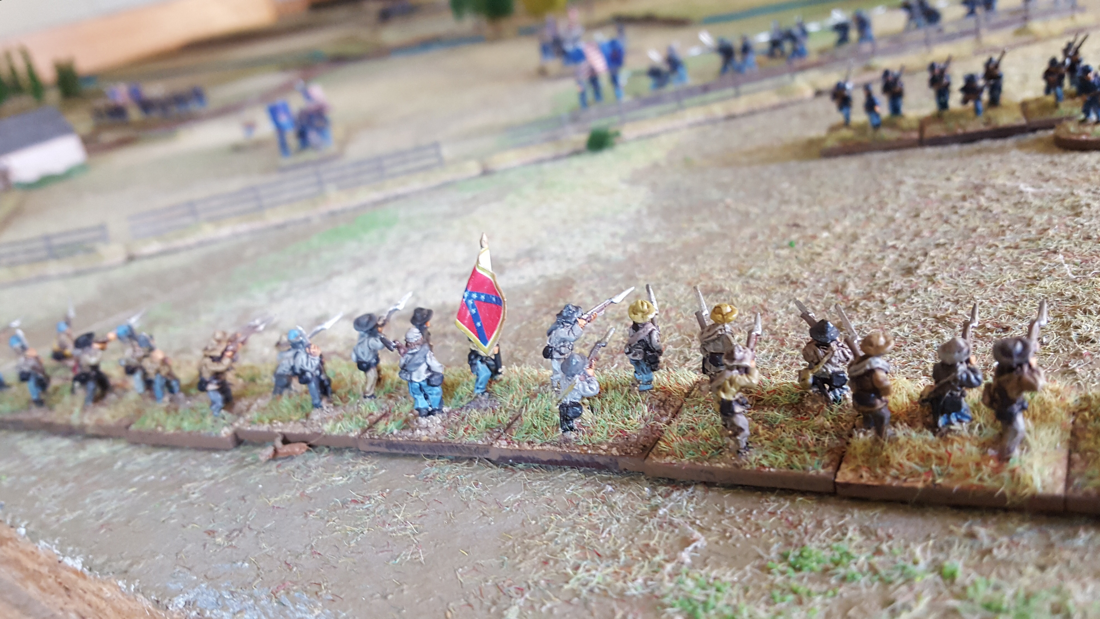



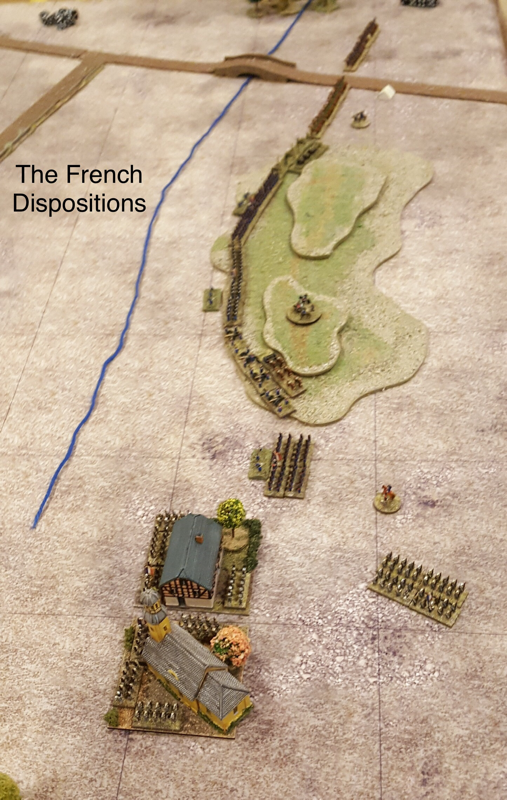
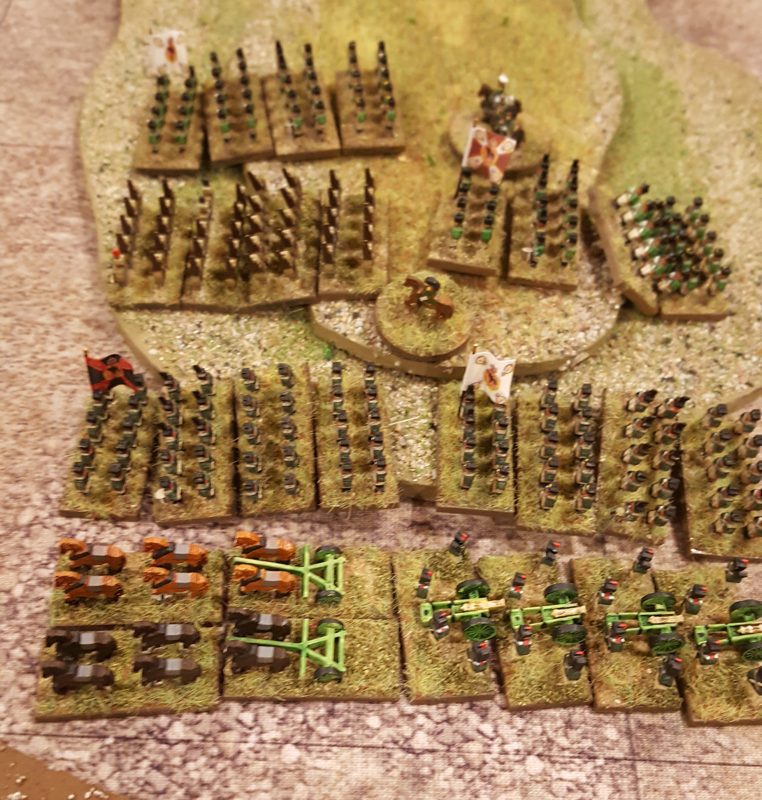

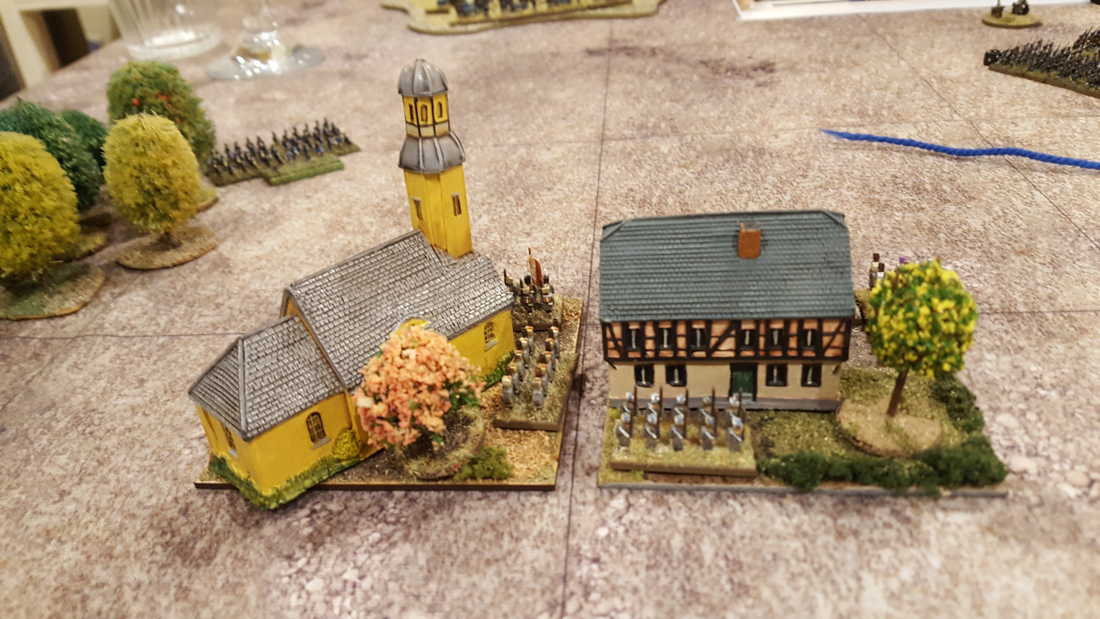



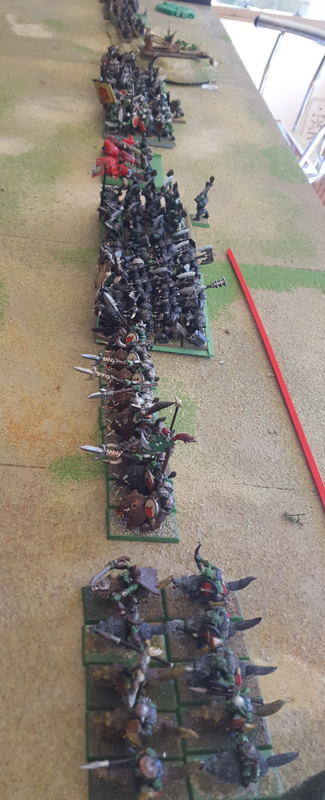

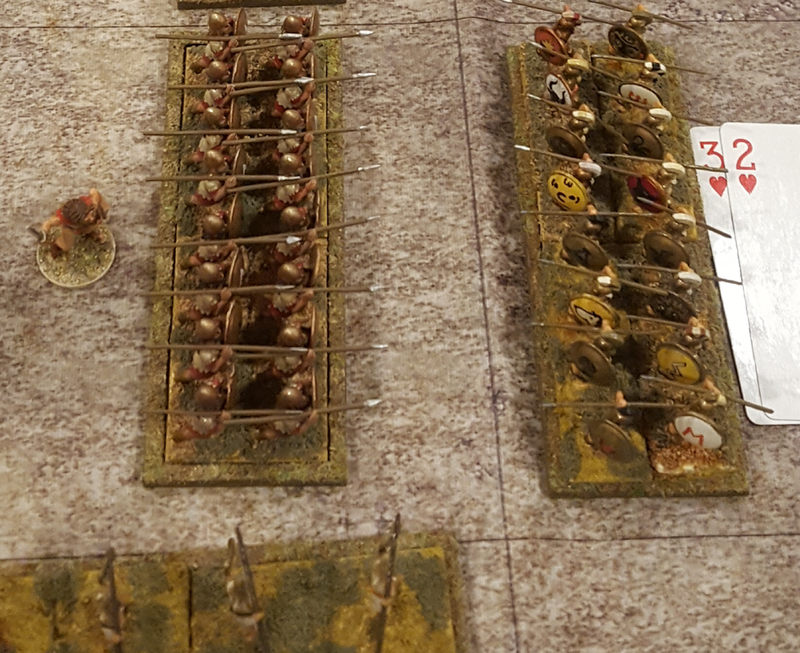
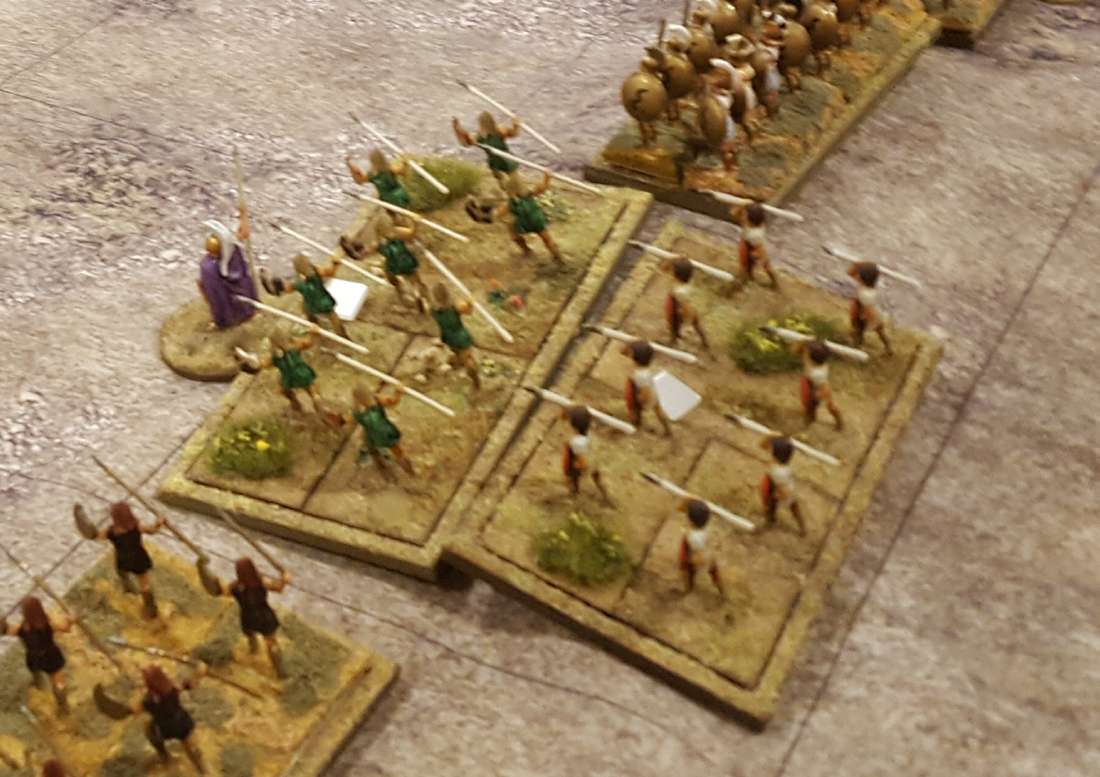



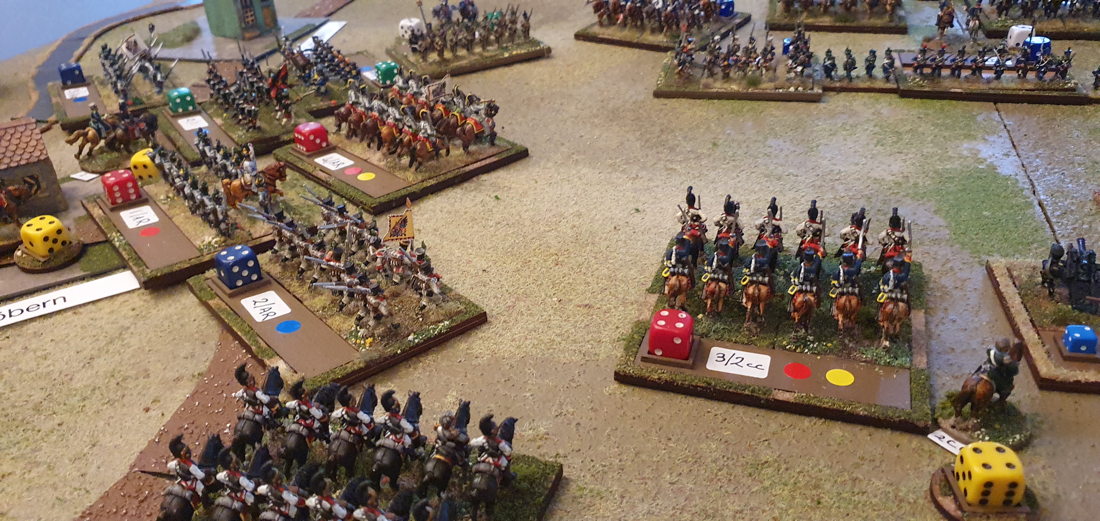
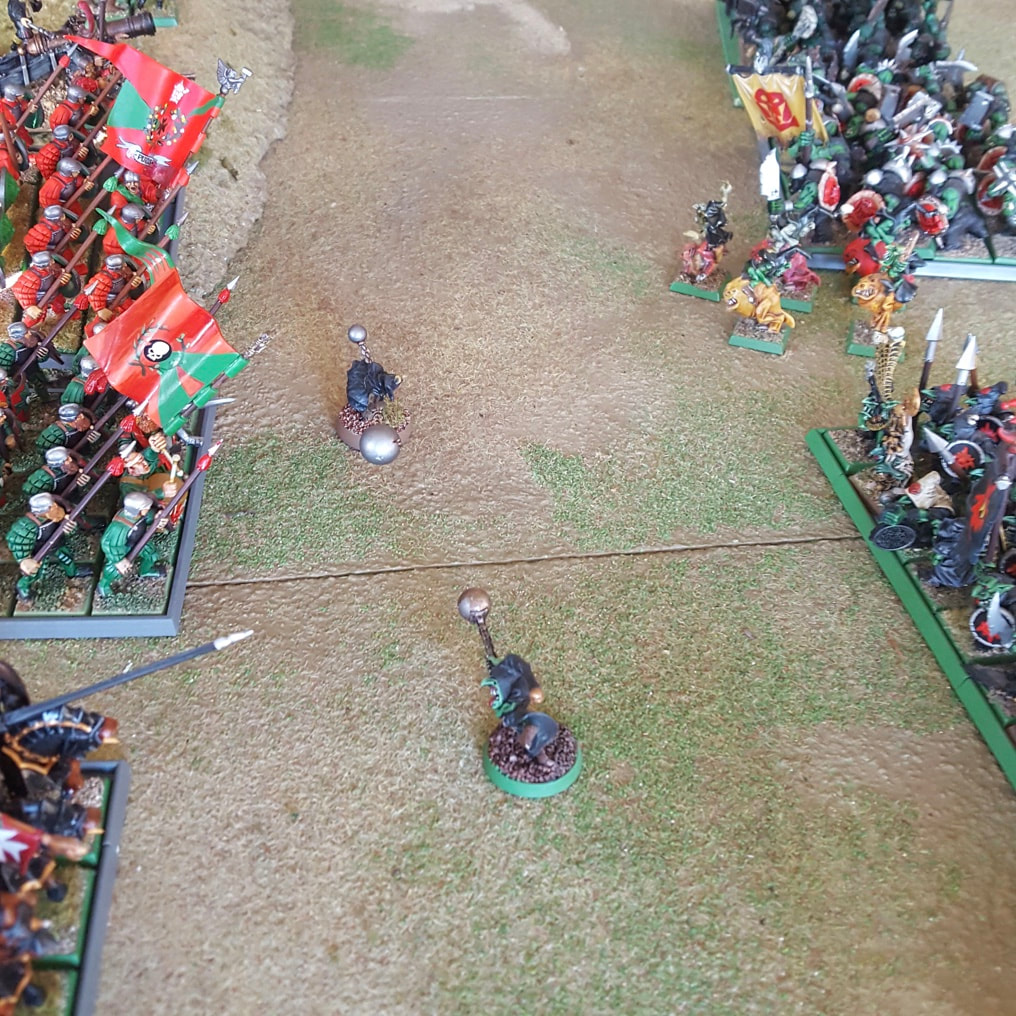
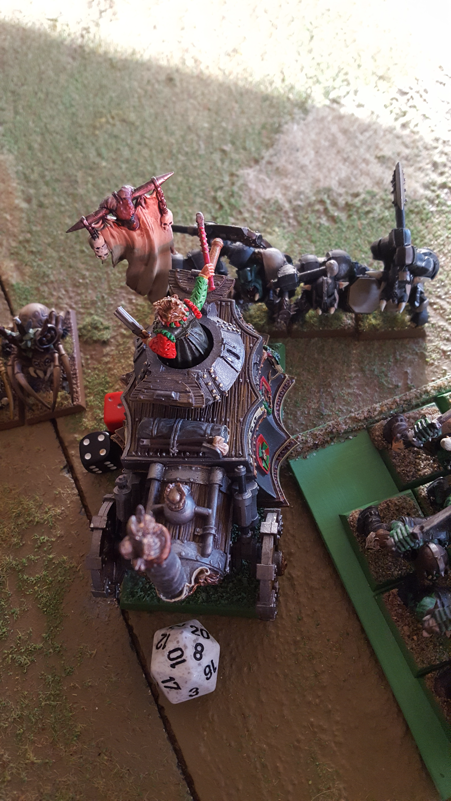



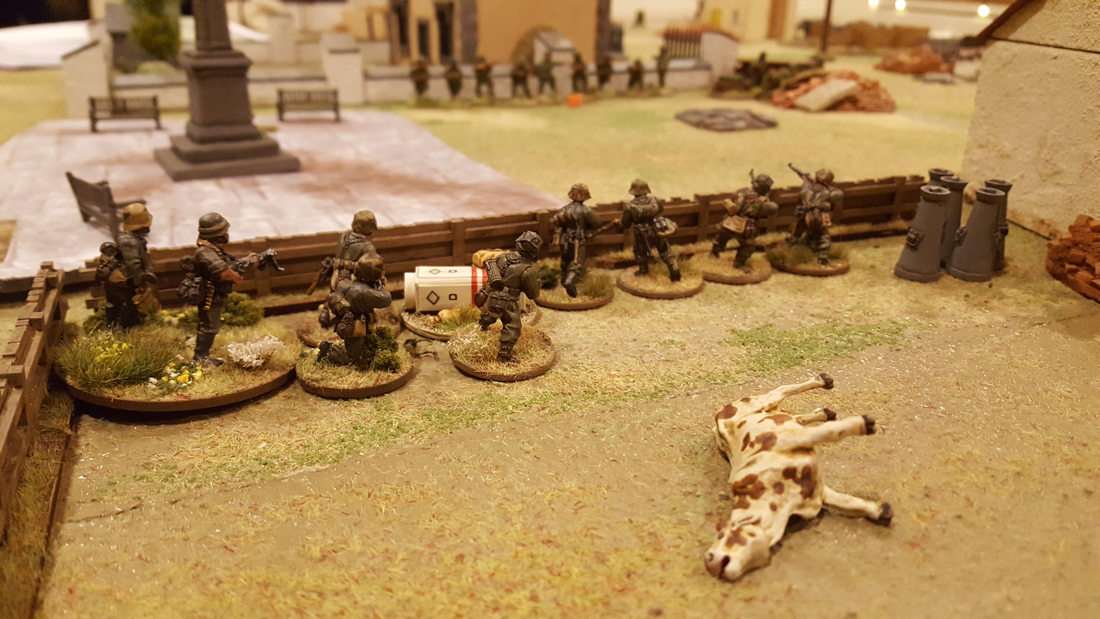
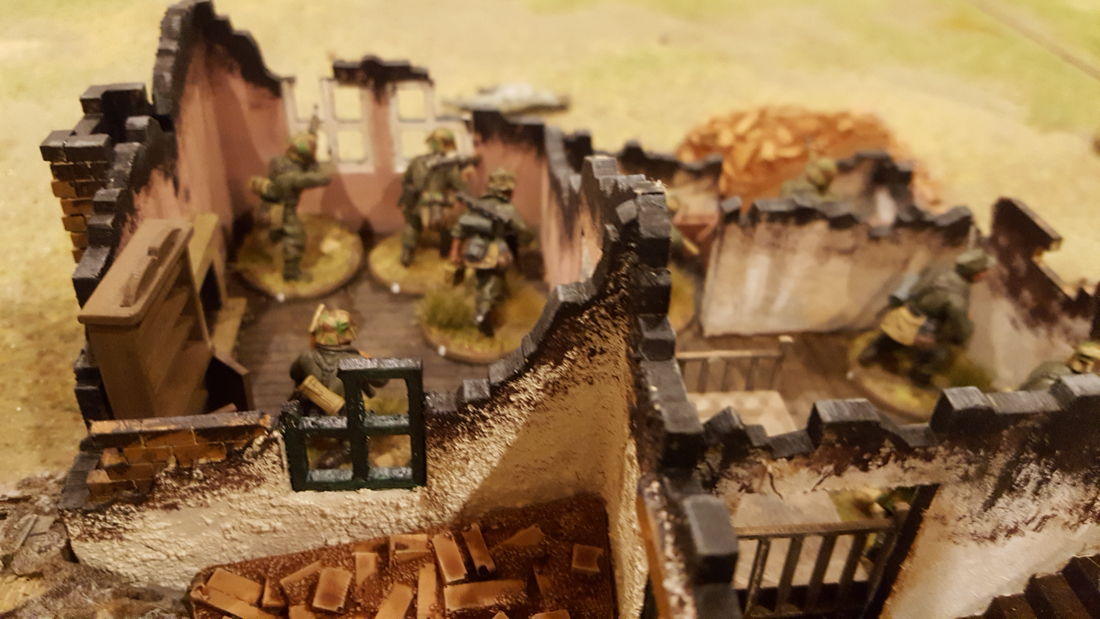

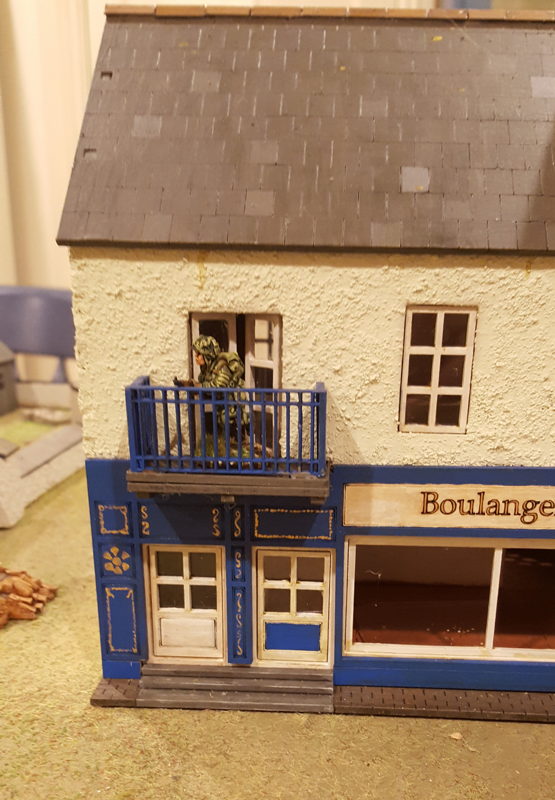



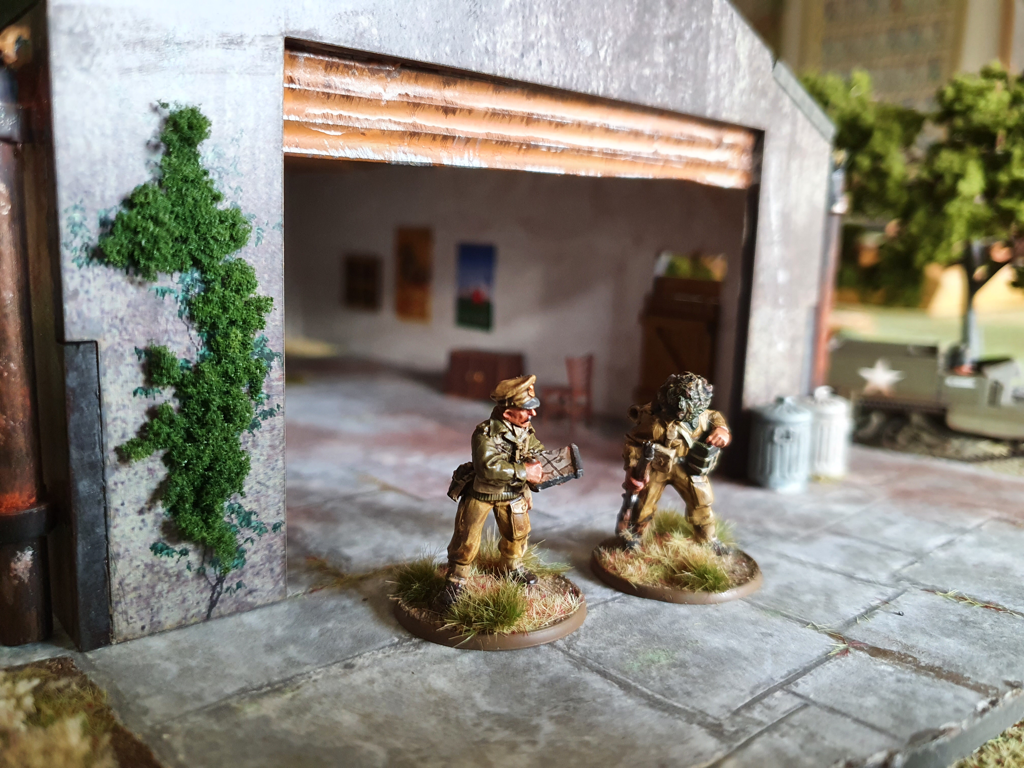
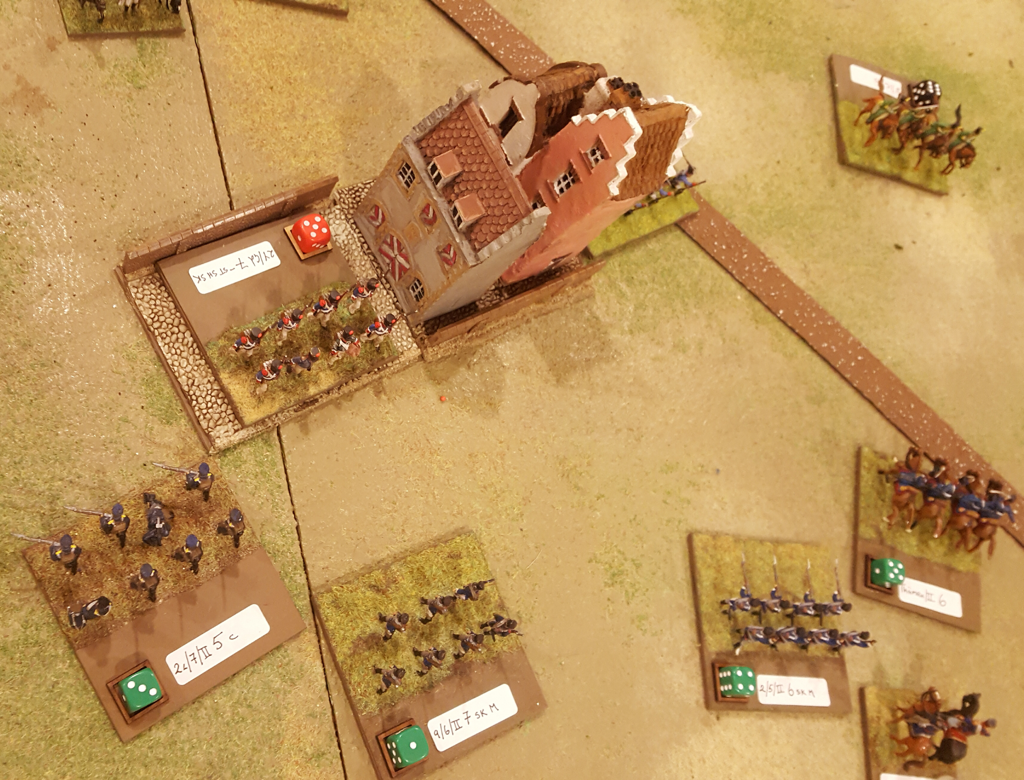
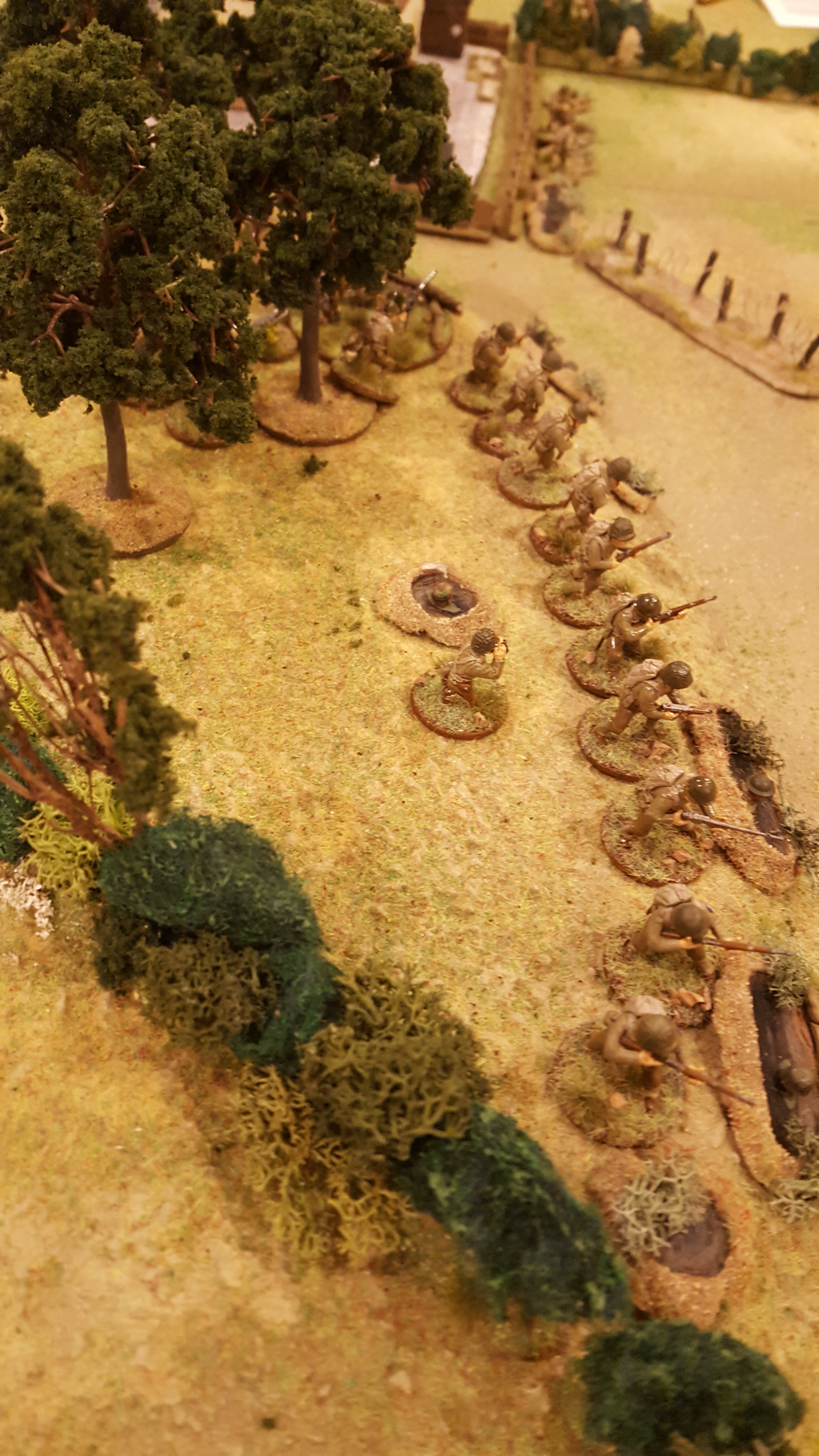

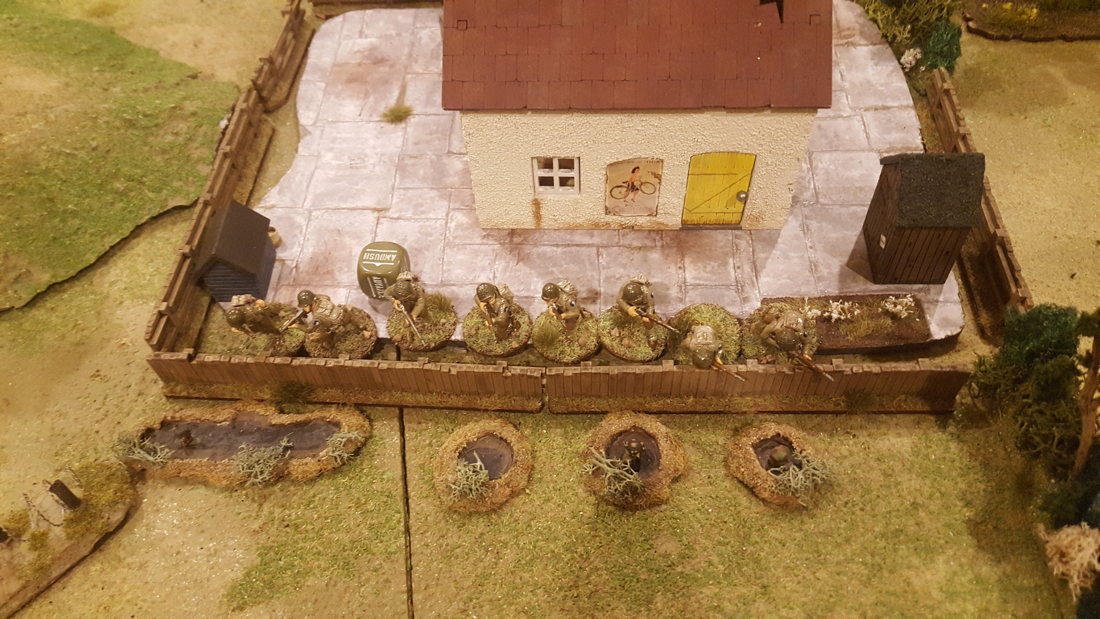
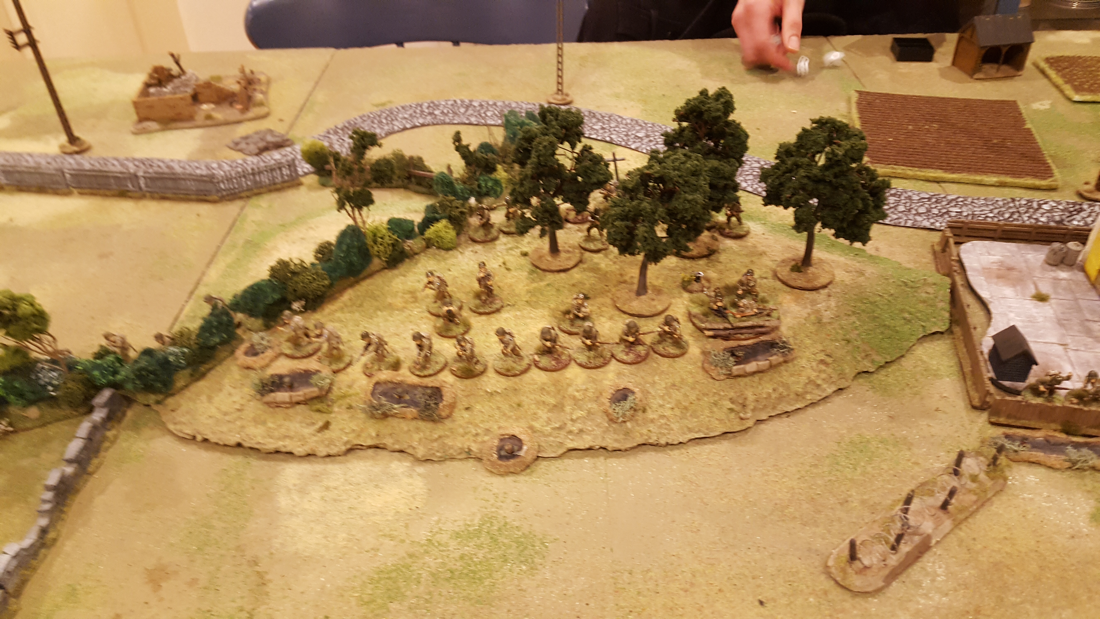





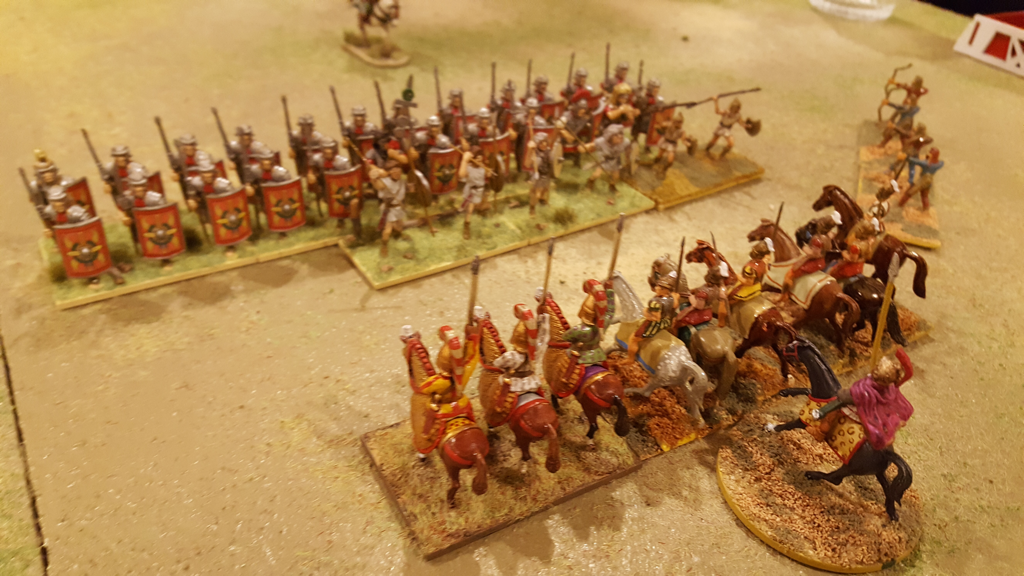

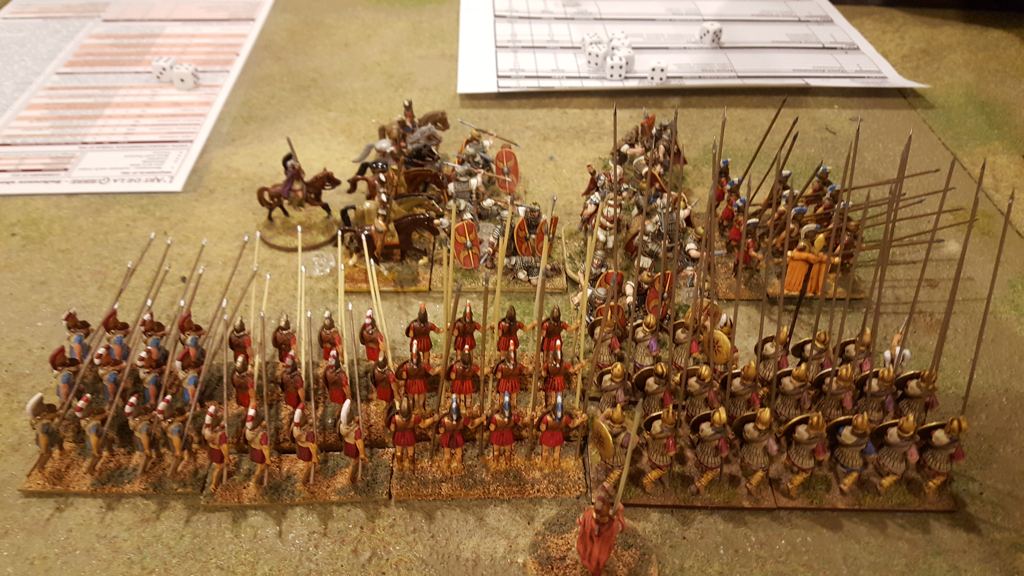
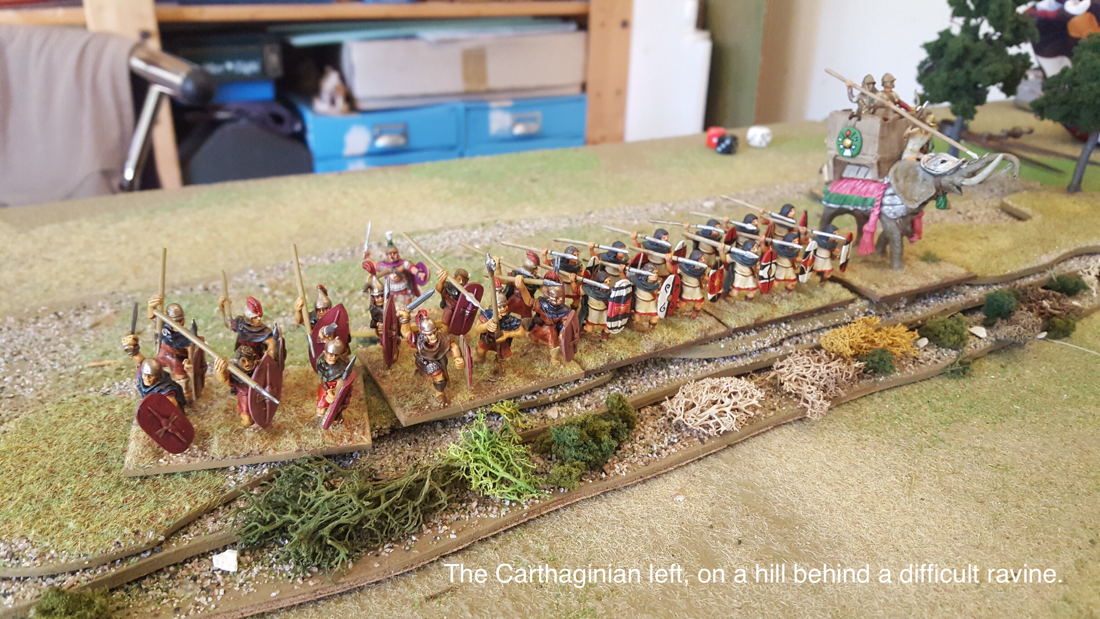

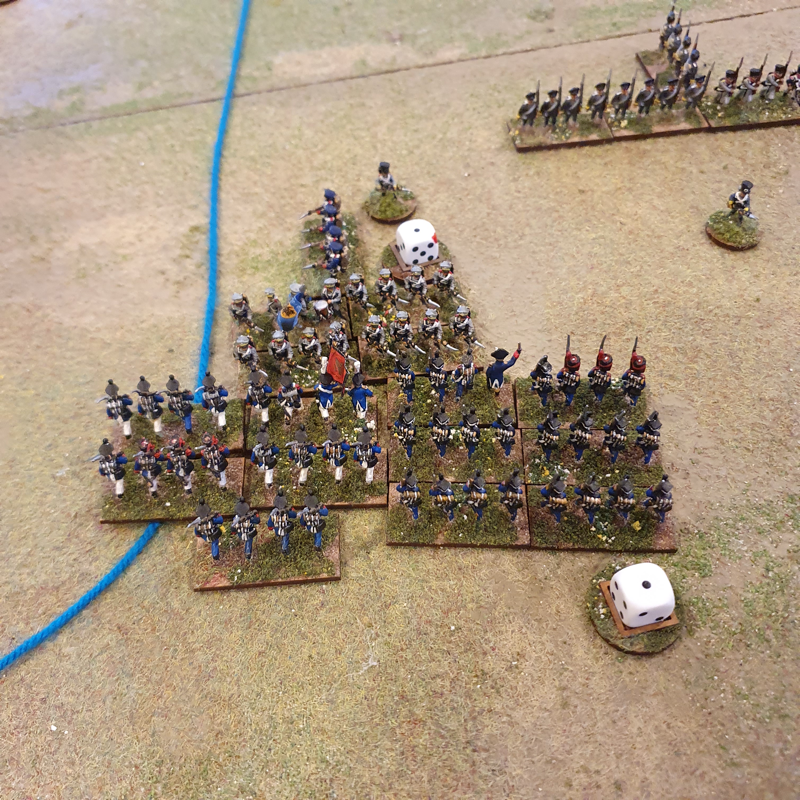



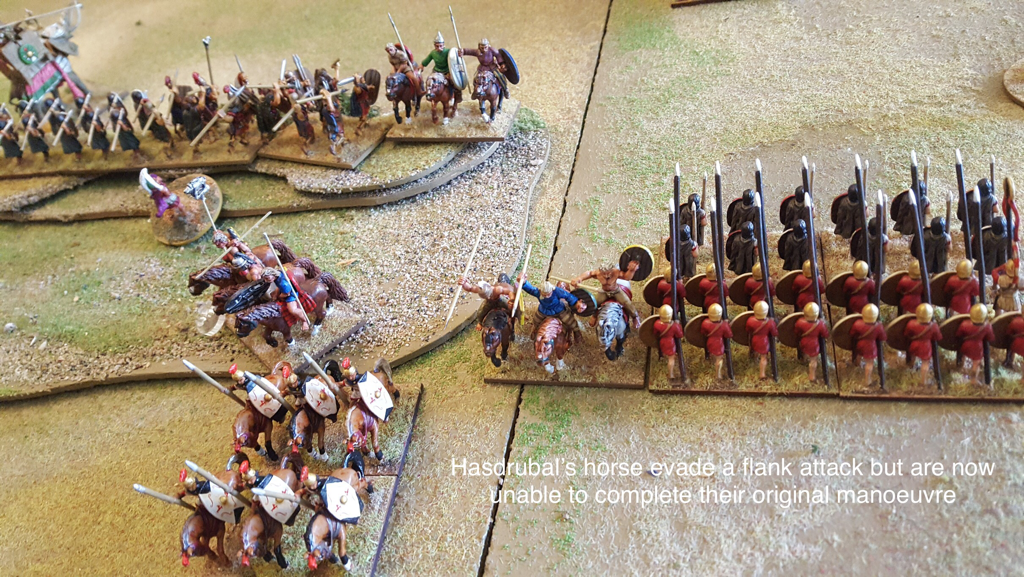
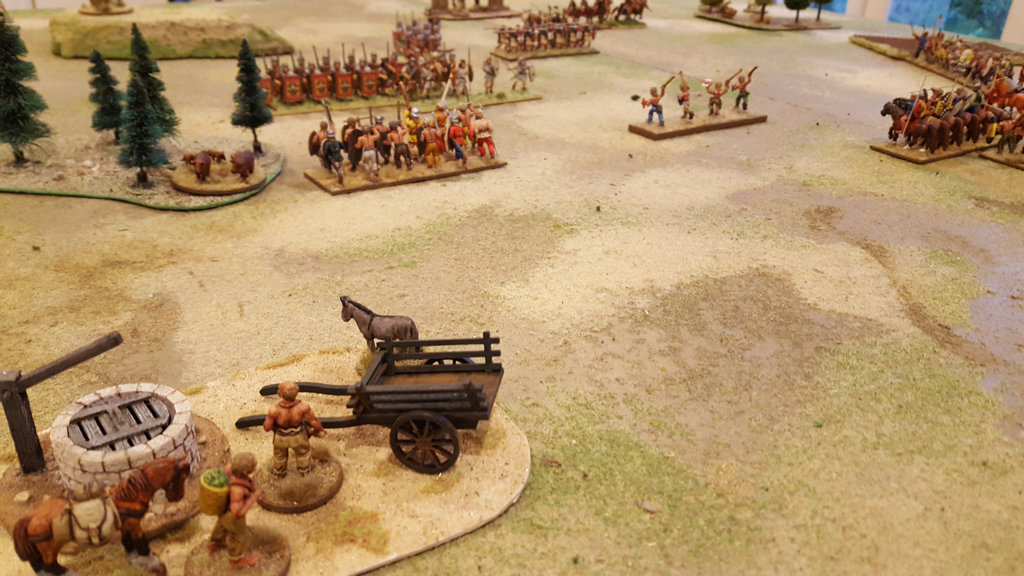


 RSS Feed
RSS Feed